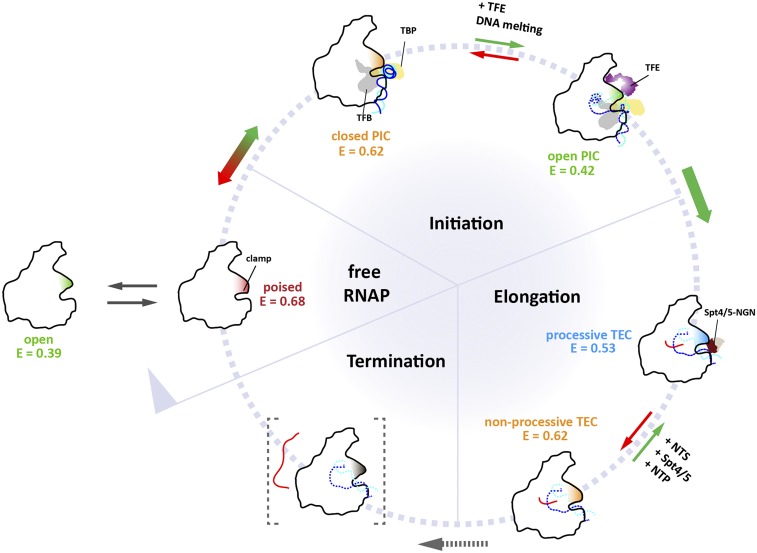Fig. 5.
Model depicting the status of the archaeal RNA polymerase clamp at different stages of the transcription cycle. Single-molecule FRET measurements reveal the conformational space sampled by the RNAP clamp (for an overview of all clamp states see Fig. S7 and Tables S1 and S2). Different conformational states of the clamp that can be distinguished by the different mean FRET efficiencies, E, determined in this study are colored in red, green, orange, and blue. TBP is depicted in yellow, TFB in gray, TFE in purple, and Spt4/5 in dark and light brown. Green and red arrows represent productive and nonproductive pathways in the transcription cycle, respectively. In the free RNAP, the clamp completely closes over the binding channel resulting in a collapsed state. In the preinitiation complex RNAP can adopt two conformational states, termed open and closed PIC states. Transcription initiation factor TFE induces an opening of the clamp thereby stabilizing the open initiation complex with the template strand loaded into the active site. In the absence of TFE, the clamp is closed, and the template DNA is presumably not completely loaded into the RNAP resulting in a closed clamp state. Progression into the elongation phase of transcription results in a conformational change that leads to a closure of the clamp as seen in crystal structures of the TEC. However, a second conformational state is possible that reflects a less processive and presumably backtracked state of the RNAP (termed nonprocessive state). Addition of the elongation factor Spt4/5 and elongation of the RNA induced by nucleotide addition induce the transition to the closed TEC conformation that is characterized by high processivity. Termination of transcription is a state that cannot be mimicked in our model system but most likely requires the opening of the clamp for RNA strand release to commence.

